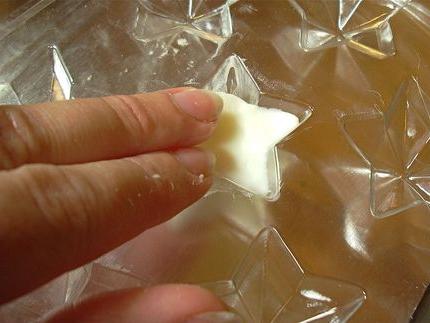The latest fashion trends in decorating our interior with do-it-yourself things made us remember traditional Russian crafts. What was created hundreds of years ago, modern masters began to appreciate, search for technology and restore Russian crafts. Kislovodsk porcelain also belongs to them. Invented by immigrants from the Caucasus even 250 years ago, handmade sculpting, rather than stamping put on the stream, has always been appreciated and famous for its originality and exclusivity. Now products of this kind cost a lot of money and you can not always afford to purchase them.
In fact, each of the quite affordable materials can make such an interior decoration. Let's try to create
cold porcelain with our own hands. The main ingredients are:
- one glass of corn starch, but you can take potato;
- one glass of PVA glue, we recommend adding “Moment”.
Additional materials: glycerin, petroleum jelly or oily hand cream - 1 tablespoon each, citric acid - half a teaspoon, dyes.
From the tools you will need a minimum set:
- nail scissors;
- a sharp knife;
- wire;
- any knitting needles with rounding at the ends.
You may need pliers, thin tweezers, a roller knife, silicone molds, depending on how fine the work is and what shape of the product you want to get.
We are preparing an elastic mass, from which we will make cold porcelain with our own hands. In a glass or non-stick dish, mix the main ingredients, gradually add additional ones, and bubbles will appear. This citric acid will react with the rest of the components. We put the container in a water bath. Bring to the consistency of thick sour cream, mix all the time. The mass should move away from the walls of the dishes and gather in one lump. We lay out our “plasticine” on the laid table and knead to an elastic state. Remember that when you make cold porcelain with your own hands, they must be clean, as the material strongly absorbs dirt.

If you did not add dye immediately before cooking, then there are two options for staining it. The first is to color the product when it is already completely ready and dried. Fix with acrylic varnish. The second option is to gradually introduce dye into the elastic mass, in each piece exactly as much as you need to get the necessary shade of the fragment for the future composition. This method is more practical, the colors do not fade and do not fade in the sun. It should be remembered that the mass in the wet state with the addition of dye has a shade more faded than in the dry state.
Making cold porcelain with your own hands is a fascinating, time-consuming and painstaking process, so your “plasticine” can dry out in the process of creativity. Use water to restore the elasticity of the material. To prevent it from sticking to your hands, use a simple hand cream.
Creating masterpieces with your own hands, you will not only decorate the interior of your home. They will be a wonderful gift for your loved ones, friends, acquaintances, because the material is only called "cold porcelain." Flowers made from it look like living, absorbing the warmth of your hands.